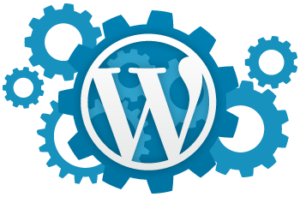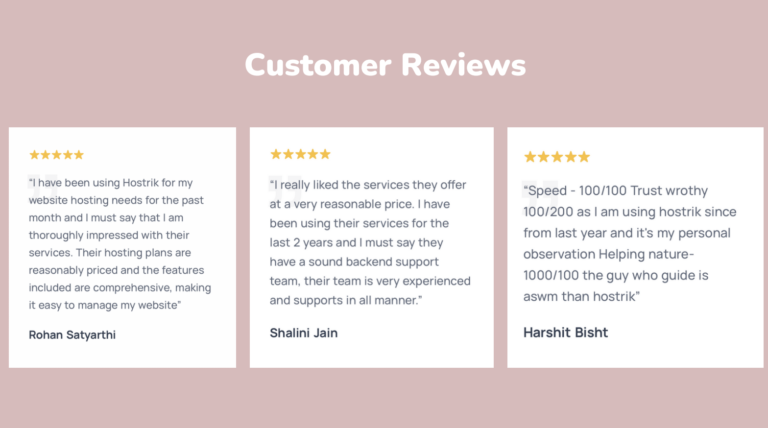Complete & Easy guide to WordPress website creation using top 2 methods.
What Is WordPress And The History Of WordPress

WordPress is a popular and widely used content management system (CMS) that allows users to create and manage websites without extensive coding knowledge. It is open-source software written in PHP and supported by a large community of developers, making it highly customizable and adaptable.
Originally launched in 2003 as a blogging platform, WordPress has evolved into a versatile CMS that powers a substantial portion of the internet. It provides a user-friendly interface and a wide variety of themes, templates, and plugins, allowing users to create websites for various purposes, such as blogs, business websites, e-commerce stores, wallets, etc.
WordPress Features
1) Themes: WordPress has a large theme library that supports the overall style and structure of your website. Users can choose from free and premium options to customize the theme to their brand and taste.
2) plugins: WordPress offers thousands of plugins that a user can apply to improve the functionality of her website. Users can add features like contact forms, social media integration, SEO tools, security upgrades, and more. Use plugins.
3) Content Management: WordPress gives a user-pleasant editor that simplifies content material advent and management. Users can without difficulty put up and prepare weblog posts, pages, images, videos, and different media.
4) search engine marketing Friendly: WordPress changed into designed with seek engine optimization (search engine marketing) in mind, supporting websites to rank better in seek engine results. It presents functions like customizable permalinks, meta tags, and XML sitemaps to grow visibility and enhance seek engine performance.
5) Community and Support: WordPress has a massive and energetic network of customers, developers, and individuals who offer support, advice, and everyday software program updates. This energetic network guarantees that WordPress stays secure, up-to-date, and continuously evolving. WordPress may be mounted on an internet server and accessed via an internet browser, permitting customers to manipulate their websites from everywhere with a web connection. Its flexibility, scalability, and sizeable plugin atmosphere have made it a pinnacle preference for individuals, small businesses, or even massive organizations.
Building a WordPress site is essential for business owners, entrepreneurs, and anybody looking to highlight their areas of expertise. With WordPress powering over 43% of all websites on the Internet, it is clear that using this platform to create effective, practical, and aesthetically pleasing websites is a wise choice. This complete guide to constructing a WordPress website from the ground up covers choosing a domain name, choosing a web hosting service, customizing your site’s design, adding content, and optimizing it for search engines. Let’s move forward.
Select a domain name For your Website

1 Choosing a domain name is the first step in setting up a WordPress website. Your domain name serves as the Internet address for your website and should be distinctive, memorable, and simple to type. When selecting a domain name, keep the following in mind:
2 Short and uncomplicated is best.
3 exclude dashes and numerals
4 If at all possible, stick with a.com extension.
5 Verify that it is available and hasn’t been registered by anyone else.
6 Whenever possible, include keywords relating to your niche.
7 If you’re having trouble thinking of a good name, try using a domain name generator like Domain Wheel to help you brainstorm possibilities.
Domain description.
A domain is a specific human-readable identifier that serves as the Internet address of a website. It acts as a simple replacement for the complex IP addresses that computers use to find and connect. A domain name is essentially a distinctive, recognizable string of characters that directs consumers to specific web pages.
Register your domain name and select a web hosting company

The following steps involve choosing a web hosting company and registering your domain. This is necessary for your WordPress website to be reachable online. Making a WordPress website is reasonable and simple thanks to the affordable plans and free domain names offered by web hosting companies like Hostrik.
Think over a web host’s dependability, customer service, loading times, and cost considerations. After deciding on a provider, adhere to their setup instructions to install WordPress on your hosting account and register your domain name.
Put in WordPress 
Installing WordPress is the next step after purchasing a web hosting package and registering your domain name. The majority of web hosting companies offer simple, one-click WordPress installation. You can control your website’s content, appearance, and settings from the dashboard you visit after installing WordPress.
Choose a theme for WordPress

The theme of your WordPress website affects how it looks. Numerous design possibilities and functionality are offered by the countless free and premium themes. When selecting a theme, take into account elements like responsiveness, customizability choices, plugin compatibility, and developer support.
ThemeForest and ThemeIsle are two well-known theme marketplaces. Once you’ve decided on a theme, go to Appearance > Themes > Add New in your WordPress dashboard to install and activate it.
Change the appearance of your WordPress theme

It’s time to personalize your website’s look after installing your theme. The WordPress Customizer gives you the ability to change the layout, font, and other design elements of your website. In your WordPress dashboard, select Customise > Appearance to enter the Customizer.
Consider the following while modifying your theme:
1 Pick a color palette that is representative of your brand.
2 Pick readable and eye-catching typefaces.
3 Put crucial stuff first in your website’s layout.
4 Enhance your site’s branding by using a logo and favicon.
Build the pages you need

All of the following pages should be present on every WordPress site:
1 Home – An attractive landing page that emphasizes the purpose and content of your site.
2 About – A website that provides general information, introduces employees, and inspires trust.
3 Services or Items: a list of your products or services. Blog: a frequently updated section of interesting content relevant to your niche. Contact: a page that includes a contact form and your contact information so visitors can contact you.
4 The page that lists your website’s privacy policy and any necessary disclaimers is called the privacy policy.
5 Jump to pages > Add “New” in your WordPress dashboard to create a new page. Consider adding relevant content to each page along with relevant keywords to improve your site’s SEO
Install the necessary plugins for WordPress
![]()
To increase the functionality of your WordPress website, additional software known as plugins can be added. Although there are innumerable plugins available, the following are some crucial ones to take into account:
1 Yoast SEO: Boost the search engine optimization of your website
2 Create contact forms and other user submission forms with ease using WPForms.
3 Improve your website’s performance, security, and marketing features with JetPack.
4 Turn your website into an online store with WooCommerce.
5 In your WordPress dashboard, navigate to Plugins > Add New, search for the plugin you want to install, and then click Install Now.
Plug-in Description
A plug-in is a software component that adds specific functionality to an existing computer program or web browser. They help extend the functionality of the Server Software by providing additional tools, features, or services. Plugins are usually created by third-party developers and installed separately from the main software.
plugins can greatly improve your software and website, but it’s important to use them wisely. Installing too many plugins can affect performance, security, and compatibility. To ensure a smooth and safe experience, you should only use trusted plugins that come from trusted sources and are updated regularly.
Improve the SEO of your website

When it comes to bringing organic traffic to your WordPress website, search engine optimization (SEO) is essential. Consider the following to enhance the SEO of your website:
1 For each page and post, use detailed and distinct titles.
2 Include pertinent keywords in your website’s headings, meta descriptions, and content.
3 Compress your photographs and use evocative alt tags to optimize them.
4 To submit a sitemap to search engines like Google and Bing, create one.
5 Create shareable content for your website and connect with other sites in your niche to create quality backlinks to it.
Create a blog and post topics on your website that appeals to it

A successful strategy for boosting traffic to the WordPress site and interacting with visitors is a blog. Produce educational and interesting articles on your area of expertise frequently to establish yourself as an expert and increase website traffic. To promote your blog posts, think about using social media. You could also think about guest posting on blogs with audiences that are similar to your own.
Track and Examine the Performance of Your Website

It’s crucial to track and evaluate the performance of your WordPress website after it goes live. Create a Google Analytics account to monitor website traffic, user activity, and conversion rates. Make informed judgments based on this data to further optimize your site by identifying areas that need work.
Conclusion
The process of setting up a WordPress website is simple and takes only a few hours. You may create a professional, useful, and visually appealing website that efficiently promotes your products and services by following the instructions in this book. Your WordPress website will continue to expand and draw new visitors with consistent upgrades and continual optimization. Therefore, get to work creating your very own WordPress website right now!






